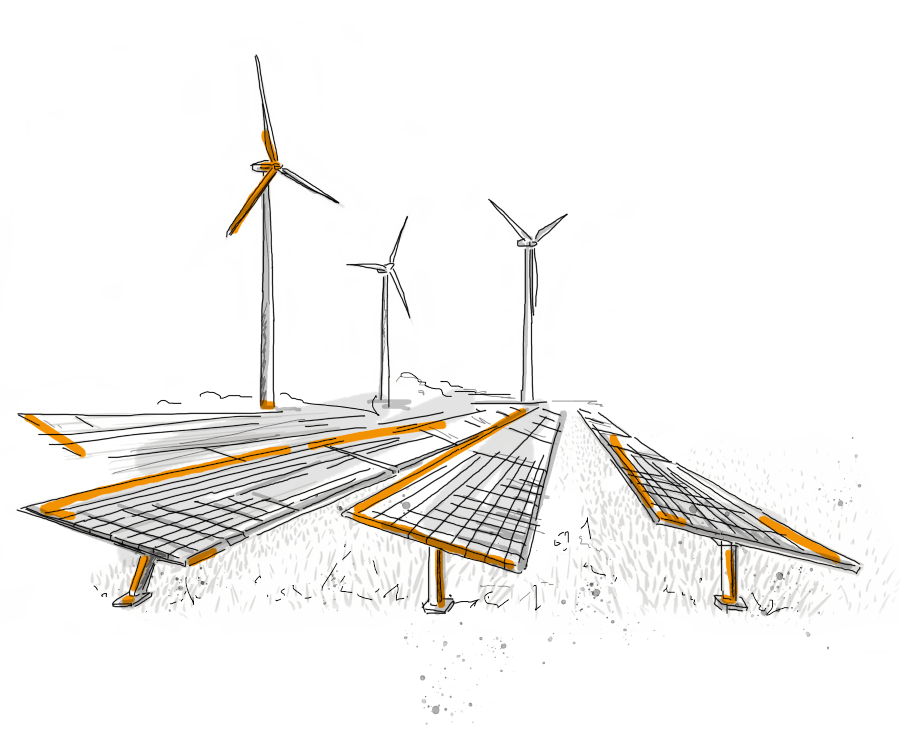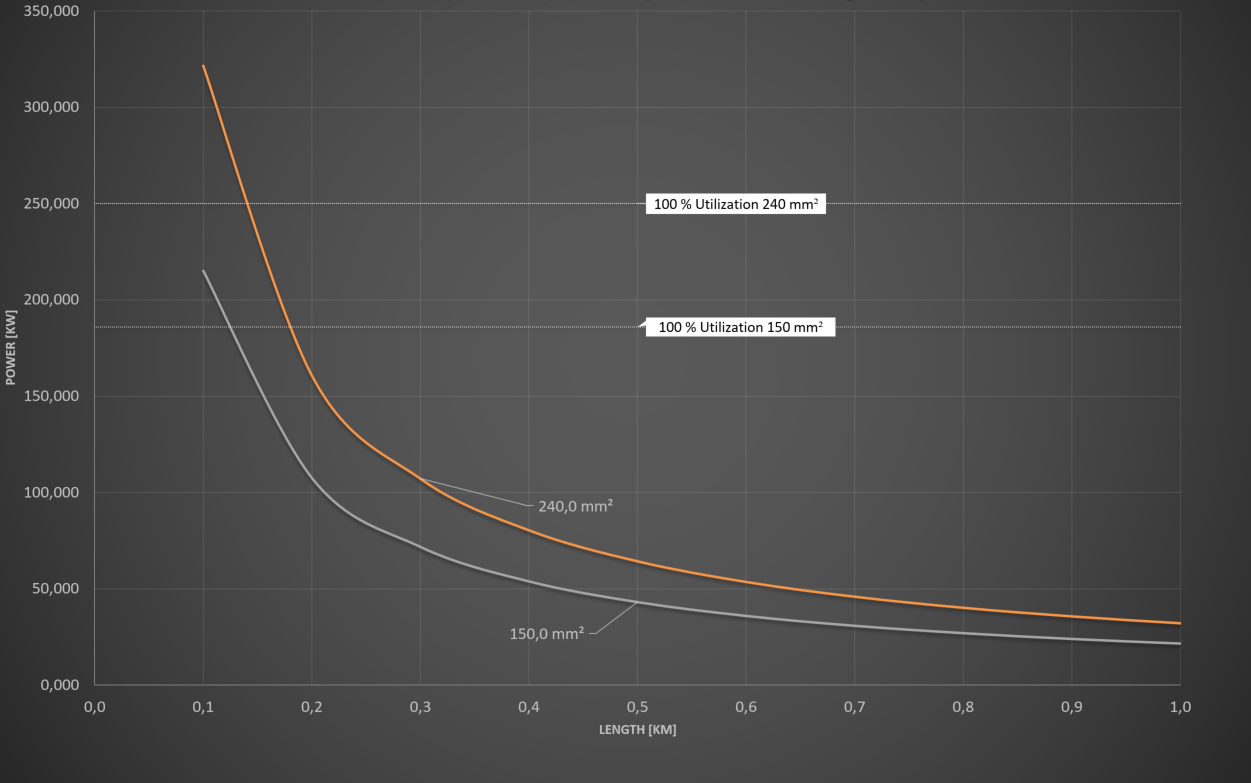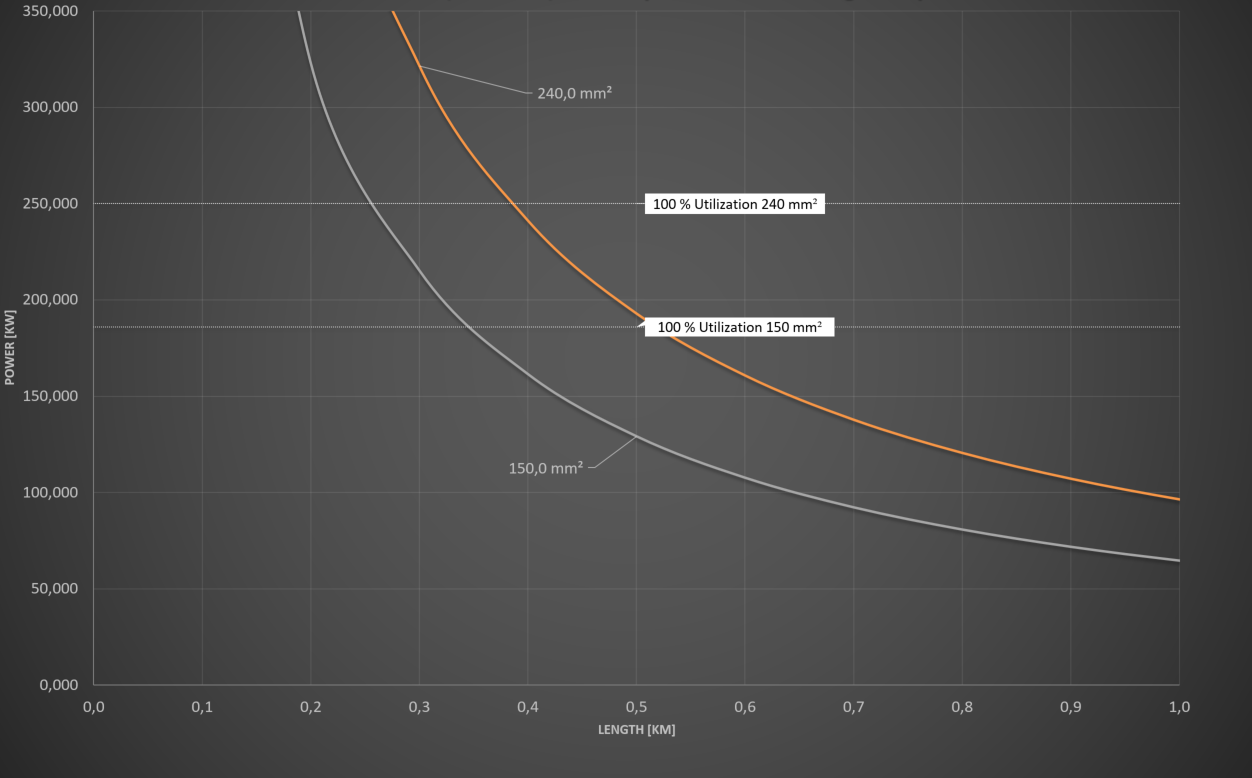
Grid congestion causes rejection of PV connection requests by grid operators
Due to economic unreasonableness, grid operators are rejecting applications to connect PV systems in the low-voltage grid more often. The responsible grid planners are guided by the connection guideline VDE-AR-N 4105, in which decentralized generation facilities may only raise the voltage level in the low-voltage grid by 3% compared to the previous situation. Potential photovoltaic plants are thus not realized, despite existing technical transmission capacity.
The current-carrying capacity of the grids is rarely approached by complying with the directive.
The following voltage drop analysis demonstrates the limitations of integrating photovoltaic systems into the low-voltage grid using traditional calculation methods and outlines a way out using the Low-Voltage Regulation System LVRSys®.
Voltage increase due to grid integration of PV systems
According to the fundamentals of electrical science, the voltage drop of power along a line can be calculated using the following formula:

Figure 1 illustrates the normalized voltage drop (3%) from the line impedance (line length and cross-section) depending on the power. Aluminum cables with cross sections of 4 x 150 mm² and 4 x 240 mm² are frequently used in the European low-voltage grid. These cables may be loaded up to a length of 120 m or 140 m at 100 % (250 kW / 186 kW) and at a length of 500 m at the end of the cable only with 42 kW or 65 kW, respectively, in order to comply with the 3 % criterion. After 500 m, the load of the cables is only approx. 25 %. Therefore, after a short cable length, the limiting parameter for the connection of distributed generation plants is no longer the current carrying capacity, but the voltage maintenance.



Using a LVRSys® low-voltage control system with an exemplary control range of ±6%, the permissible voltage drop that must be maintained increases from 3% to 9% (Figure 2). The 4 x 150 mm² or 4 x 240 mm² cables can be 100% loaded by using the controller up to a length of 350 m or 390 m, respectively, without violating the 3% criterion. The grid integration of decentralized generation facilities can therefore be increased up to the technical utilization limit (current carrying capacity) of the cables. For longer cable sections, the grid integration can be increased 4-fold by using controllers.
This example illustrates that the LVRSys® is a building block for low-voltage grids to advance the energy transition in a cost-effective manner.





